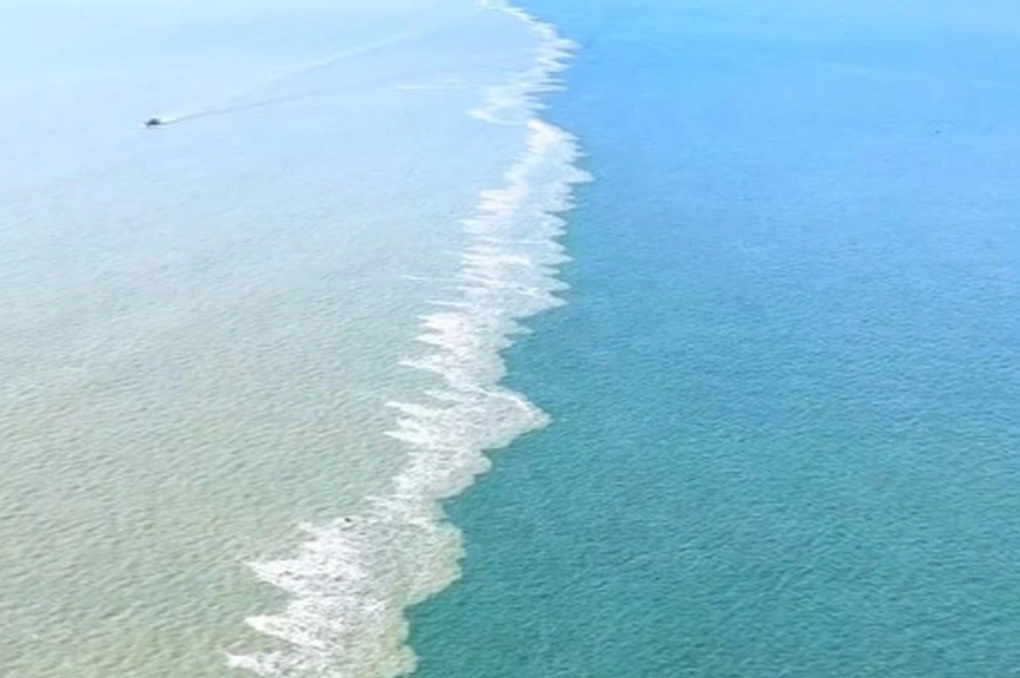
Image of sea water in Sam Son "split in two" into 2 separate colors (Photo: Cut from clip).
Recently, a clip recording the phenomenon of Sam Son sea water "split in two" into two distinct colors, one side clear blue, the other murky, has caused a stir on social networks.
Filmed at around 4pm on July 13 by a drone, this strange scene made many people curious and think of some supernatural phenomenon in the middle of the ocean.
However, from a scientific perspective, this is not a mysterious phenomenon but an inevitable result of physical, geological and biological processes that occur every day in nature.
The “split” sea: When two different streams meet
Sam Son Beach is located near the end of the Ma River, one of the major rivers in Northern Vietnam. After each heavy rain, water from upstream carries a large amount of alluvium, organic waste, and sediments into the sea.
When this turbid freshwater meets the clear saltwater offshore, the interaction between the two liquid masses with different physical properties creates a distinct boundary on the sea surface.
This is the cause of the “sea split in two colors” phenomenon that the online community witnessed in Sam Son. This phenomenon is not rare in nature and has been recorded in many places around the world .
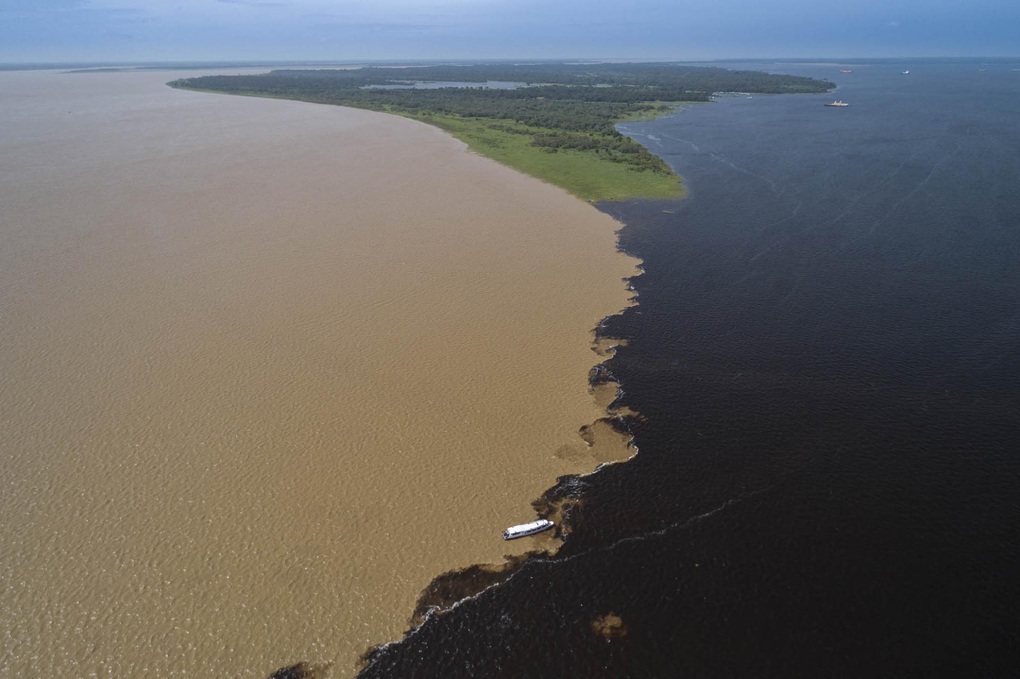
The confluence of water streams in Brazil (Photo: Getty).
In Brazil, the confluence of the Rio Negro (black water) and Solimões (brown water) rivers is so distinct that it has its own name, the “Meeting of Waters.”
This is known as the place where two streams run parallel for kilometers without mixing, due to differences in temperature, flow speed, salinity and sediment load.
Similarly, coastal Alaska has also witnessed the scene of turbid silt-laden glacier water meeting clear blue ocean water, creating an impressive color boundary recorded by NASA satellites.
Laws of fluid dynamics
The color separation between two streams of water is a result of differences in density, salinity, temperature, and optical properties.
There, freshwater from the river tends to be lighter, less salty, and often contains more suspended silt particles, making it turbid and gray, brown, or yellow in color depending on the concentration of matter.
Meanwhile, the seawater has a higher salinity and density, and is cleaner, so the blue light is scattered more strongly, making the sea appear blue. This difference has maintained a visible boundary between the two bodies of water.
In the case of Sam Son, after heavy rains, water from the Ma River carried a large amount of alluvium to the sea, creating a turbid water area. The interaction between the river water and the sea water did not mix immediately, creating a two-color water streak: one side was light blue, the other side was dark with alluvium.
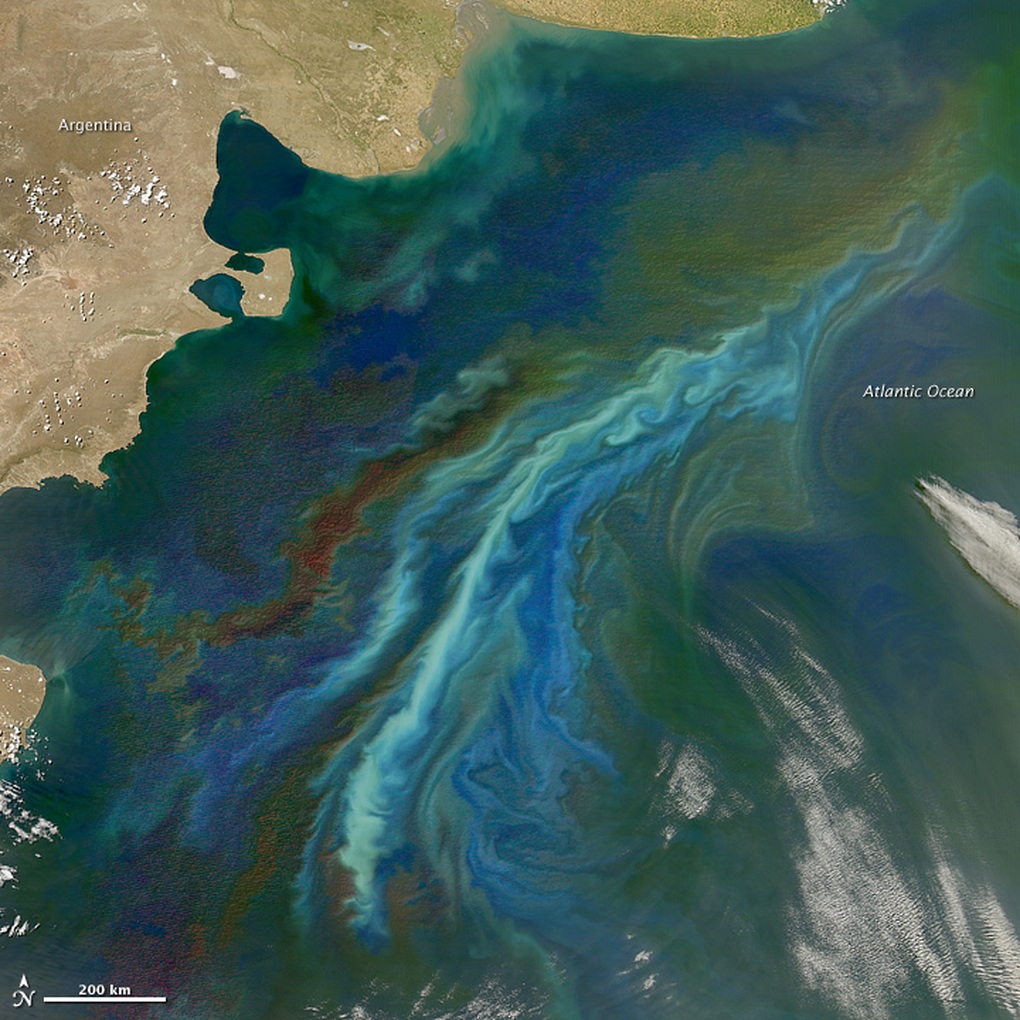
Satellite images show a unique color intersection of ocean waters off the coast of Argentina (Photo: NASA).
However, this separation is only temporary. According to Professor Ken Bruland of the University of California, USA, the two different water streams will eventually mix together through diffusion, waves, and eddies.
Dissolution time depends on factors such as density gradient, current velocity, wind strength, and coastal topography.
In addition to visual factors, this color separation phenomenon also has significant biological significance.
Specifically, in waters where river sediments carry large amounts of iron or nutrients, they can stimulate the growth of plankton, forming the first link in the food chain of marine ecosystems, as well as affecting the feeding and migratory behavior of many fish species.
Source: https://dantri.com.vn/khoa-hoc/vi-sao-nuoc-bien-chia-doi-20250715090656309.htm



![[Photo] President Luong Cuong and United Nations Secretary-General Antonio Guterres chaired the signing ceremony of the Hanoi Convention.](https://vphoto.vietnam.vn/thumb/1200x675/vietnam/resource/IMAGE/2025/10/25/1761370409249_ndo_br_1-1794-jpg.webp)

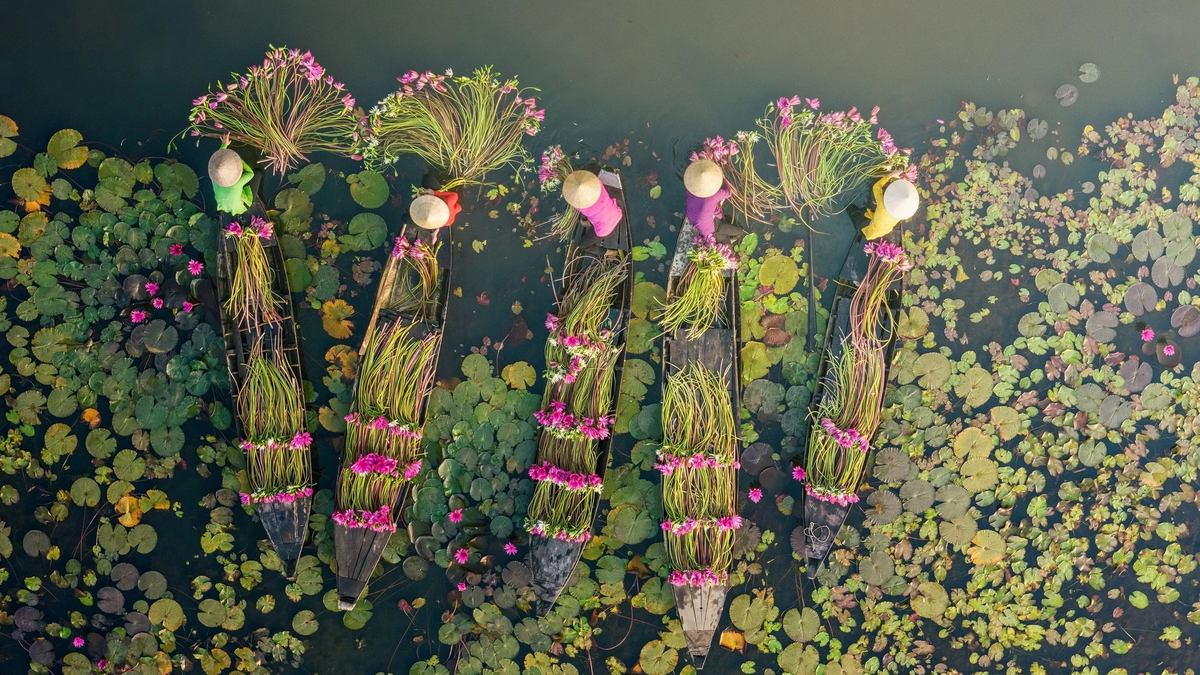


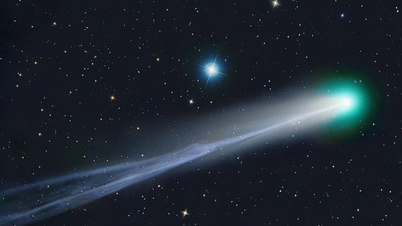



































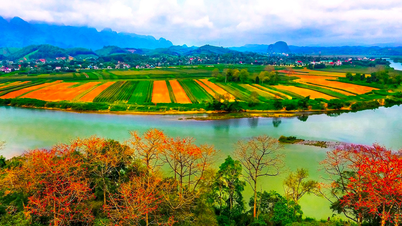










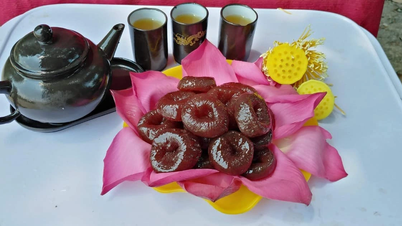





















































Comment (0)